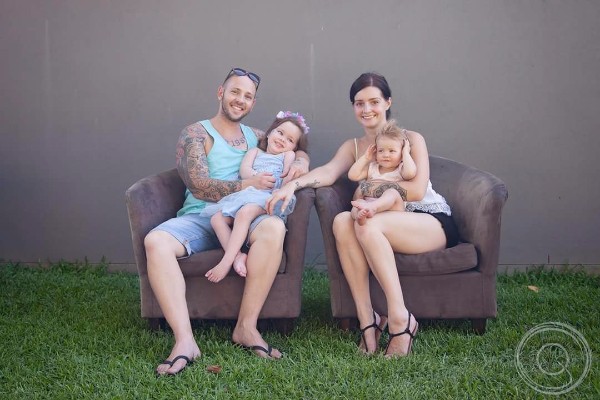
Indie's Little Legs
Indie is a 4 year old girl who has been diagnosed with INAD ( Infantile Nueroaxonal dystrophy).
This means that she will probably pass away before she turns 6.
*A bit of Indie's history*
Indie used to crawl, say words and cruise until she was 20 months and then started regressing. She has been previously misdiagnosed with Hypotonic cerebral palsy and then with cerebellum atrophy. Once she was diagnosed with an atrophy we decided to move our little family from Queensland to Melbourne in hope of better medical support.
In January 2015 she was diagnosed with INAD.
Indie can no longer move by herself, is PEG fed, cannot communicate and will lose her sight and hearing.
*****
Our goal is to make Indie's life as happy and comfortable as possible. With doing the things she enjoys and making memories that will stay with our family forever is all that we want .
.
What is Infantile neuroaxonal dystrophy (INAD)?
Infantile Neuroaxonal dystrophy is a rare genetic disorder affecting the nerve axons (which are responsible for conducting messages) in the brain and other parts of the body, causing a progressive loss of vision and of physical and mental skills.
What is the cause?
INAD is caused by an abnormal build-up of substances in the nerves throughout the brain and body, which prevents them working properly. These deposits (sometimes called spheroid bodies, because of their appearance under the microscope) are found particularly in the nerve endings going to muscles, skin and conjunctiva (around the eyes).
How common is it?
This is uncertain, but the incidence is likely to be less than 1:200,000.
How does the disease progress?
The infant’s development starts to slow down between the ages of six months and two years. Over the following years they will lose skills previously learned and vision will become increasingly impaired and, eventually, lost. Nystagmus (rapid, wobbly eye movements) and squints may be the first signs of this.
They will become hypotonic (floppy), especially in the legs and body (more so than in the arms). Over the course of several years, the child becomes as dependent as a newborn baby again, often physically very stiff (spastic) and eventually loses all understanding or real awareness of their surroundings.
The condition is not a painful one and the child will be unaware of what is happening in the later stages of the disease. The brain’s control of the muscles responsible for chewing, coughing and swallowing eventually become affected, so that assistance with a feeding tube may be needed, and chestiness will develop and may lead to infections and increasing physical weakness.
Eventually the combination of the diseased brain and physical weakness becomes too great to sustain life, and death usually occurs between the ages of five to ten years. Parents and carers will be aware of the child’s increasing frailty, and death is usually relatively peaceful and expected when the time comes.


